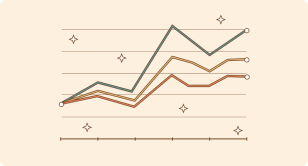To supplement your pension, a private/individual pension plan is often the best option as it has tax benefits, can be low in costs and has the best potential for a great return when invested in ETFs. There are, however, pitfalls that you need to avoid to get good returns on your contributions. We will show you how.
The key points
Don't even think about the classic option. The classic private/individual pension plan option has a fully guaranteed return, which sounds attractive, but it is a sure way to get a very low return if not lose money. These products invest your contributions in bonds with low interest rates, and from this costs are deducted.
Partial guarantees, which can be found in many new contracts today, should likewise be avoided. Those contracts also suffer from the same negative return for the guaranteed part.
Taking the lump-sum of a private/individual pension plan has tax advantages, is flexible and avoids the implicit high cost of an imposed annuity that other pension products suffer from.
You can use private/individual pension plan products to simply invest in a wide stock index and maximize your pension benefits for the long run. It is better not to be lured by having many investment options or active management. It does not pay. It is most important to just find a provider that simply minimizes costs and provides you with the core investment options.
Low-cost private pension products are better than investing in ETFs through a broker or bank, especially if you adjust your ETF positions, as you better shield your gains from taxation.







